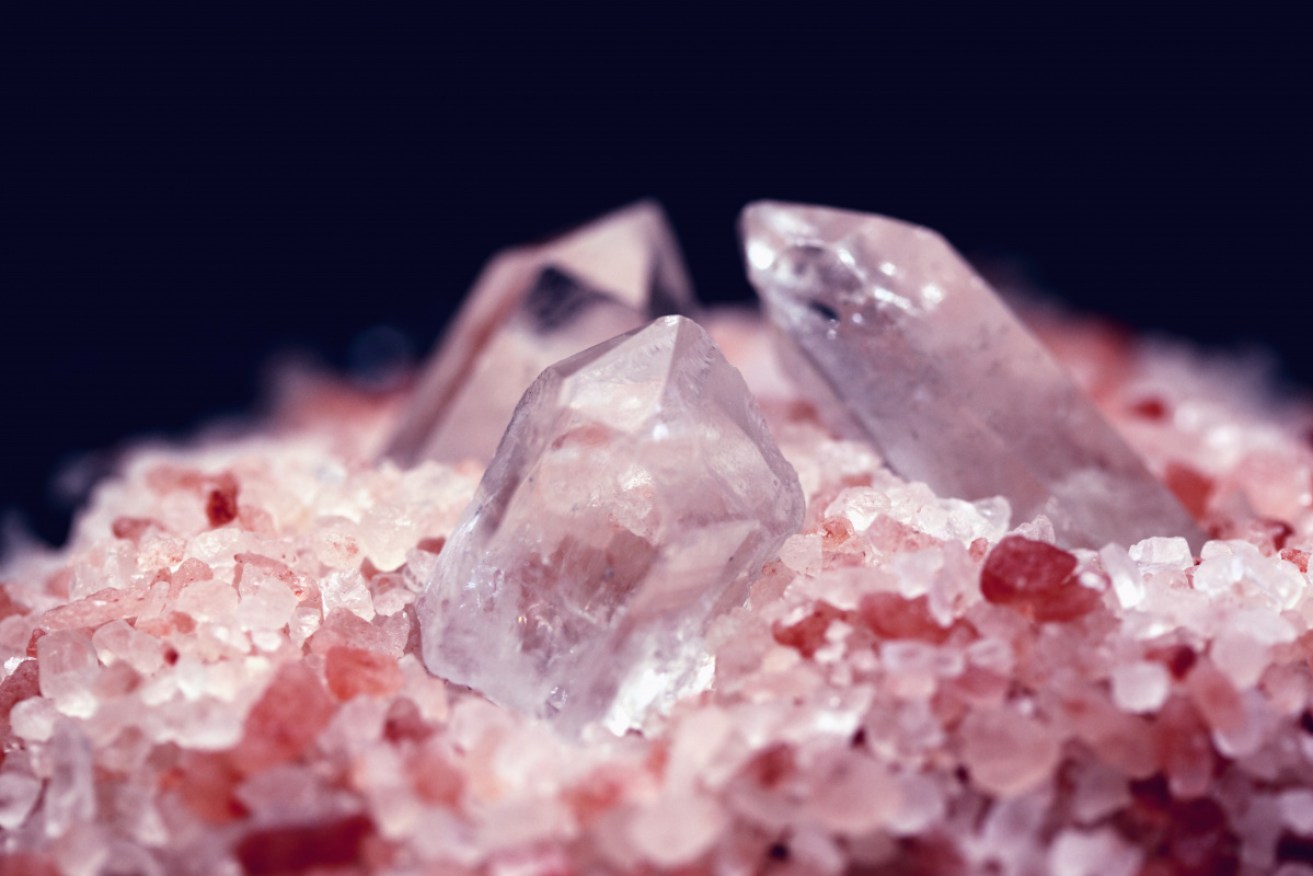Is pink salt better for us than table salt? Well, it’s not even from the Himalayas…


Pink Himalayan rock salt has been given mystical health benefits. Photo: Getty
Pink Himalayan salt has an astonishing amount of applications and is popping up everywhere.
It’s in a grinder in the millennial kitchen pantry, sprinkled on Instagram influencers’ poached eggs, in crystal-shaped salt lamps, beauty products and even “salt rooms” at wellness retreats.
The pink-hued salt has reached cult status and likely owes much of its success to its aesthetically pleasing colour, with more than 70,000 images bearing the #pinksalt hashtag on Instagram.
Perfectly matching the trendy “millennial pink”, a dusty shade of pink that continues to dominate the worlds of home décor and fashion, the salt gets its pink colour from trace minerals such as magnesium, potassium and calcium – prompting myriad, near-mystical claims about its health benefit.
But perhaps it’s time for the rose-coloured glasses to come off.
Pink Himalayan salt, so-called, isn’t even from the Himalayan mountains, and any credible dietitian – not the wellness ‘foodies’ and ‘fitspo’ influencers of social media – will advise some health claims should be taken with “a grain of salt”.
The health claims
Master of Spices Himalayan Pink Rock Salt says its “rich mineral elements” provide the body with all 84 natural elements, while Equagold Pure High Altitude Himalayan Course Salt claims to be “rich in minerals”.
Purported health benefits as a result of the minerals range from balancing the body’s pH levels, improved hydration, weight loss to hormone balance and encouraging better sleep.
But given the relatively small quantities of salt people normally consume, the proportion of minerals in the salt is unlikely to have any measurable health benefits, according to dietitians.
Heart Foundation dietitian Sian Armstrong told The New Daily pink Himalayan salt was no different to regular table salt from a dietary point of view.
Essentially, table salt is composed of 97 to 99 per cent sodium chloride.
Ms Armstrong said many consumers believed pink Himalayan salt and other gourmet salt varieties are healthier than table salt because they are less processed – usually an indicator of a healthier option.
The dietitian said Himalayan pink salt contained trace minerals, but consumers would have to eat so much salt to acquire the minerals readily available in fruits and vegetables.
“Somehow pink Himalayan salt persists in the public view as a healthier option regardless of no rigorous evidence to support the claims,” she said.
Dietitians Association of Australia dietitian and spokesperson Jane Freeman agreed there were no clinical trials supporting the claims around Himalayan salt, noting “we don’t need to be adding salt”.

Himalayan pink salt, Persian blue salt, Hawaiian red salt and Cyprus black salt. Photo: Getty
“We all eat too much salt in the first place, and already 75 per cent of salt requirements are in packaged foods,” Ms Freeman said.
Melbourne-based dietitian Sarah Lueng said the difference between table salt and Himalayan pink salt was much like the difference between raw sugar and white caster sugar.
“Yes, you can go from the angle it’s more natural and less processed and not bleached, but from a health point of view, it’s not significant.”
Ms Leung said iodised salt – salt fortified with iodine or derived from seaweed – was likely the best option if choosing salt, to support the nervous system and thyroid function.
Salt branding
Almost all pink salt is branded as ‘Himalayan’ and accompanied with a romantic stories that the salt comes out of the mountains and mined from ancient seabeds.
The reality is most of the salt comes from the Khewra Salt Mine in Pakistan, between Islamabad and Lahore.

Pink salt loaded on to a truck at the Khewra Pink Salt Mine in Pakistan. Photo: Getty
The Khewra salt mine is the second largest salt mine in the world, according to Atlas Obscura, producing 325,000 tons of salt per year.
As a result of the branding, Himalayan pink salt and other speciality salts, such as Cyprus black sea salt, Persian blue salt or Hawaiian red salt can cost up to 30 times more than standard salt, according to Choice magazine.
The consumer guide found the average cost of regular salt at $0.07 cents per 10 grams, pink Himalayan salt averages at $0.20 and other gourmet rock and sea salts average at $0.29.
But it’s not just about food. People love Himalayan pink salt so much they buy pink salt lamps – a light globe inside a chunk of salt – or pay to meditate or perform yoga in salt caves for 45 minutes for “breath giving” wellness.
Salt lamp companies and spas claim pink salt assists respiratory problems by cleansing the air from pollutants like dust and pollen.
It allegedly does this by absorbing water molecules from the air and releasing negative air ions, helping those who suffer from allergies, asthma and improves mood.
Some research suggests that positive ions may impair mood and negative ions may improve mood, but pink salt lamps have not been shown to generate negative ions.
In January, 80,000 Himalayan pink salt lamps were recalled after it was discovered that they could shock people and catch fire.
So while we await the health research to back its many health claims, in the meantime just enjoy the rosy aesthetics.








